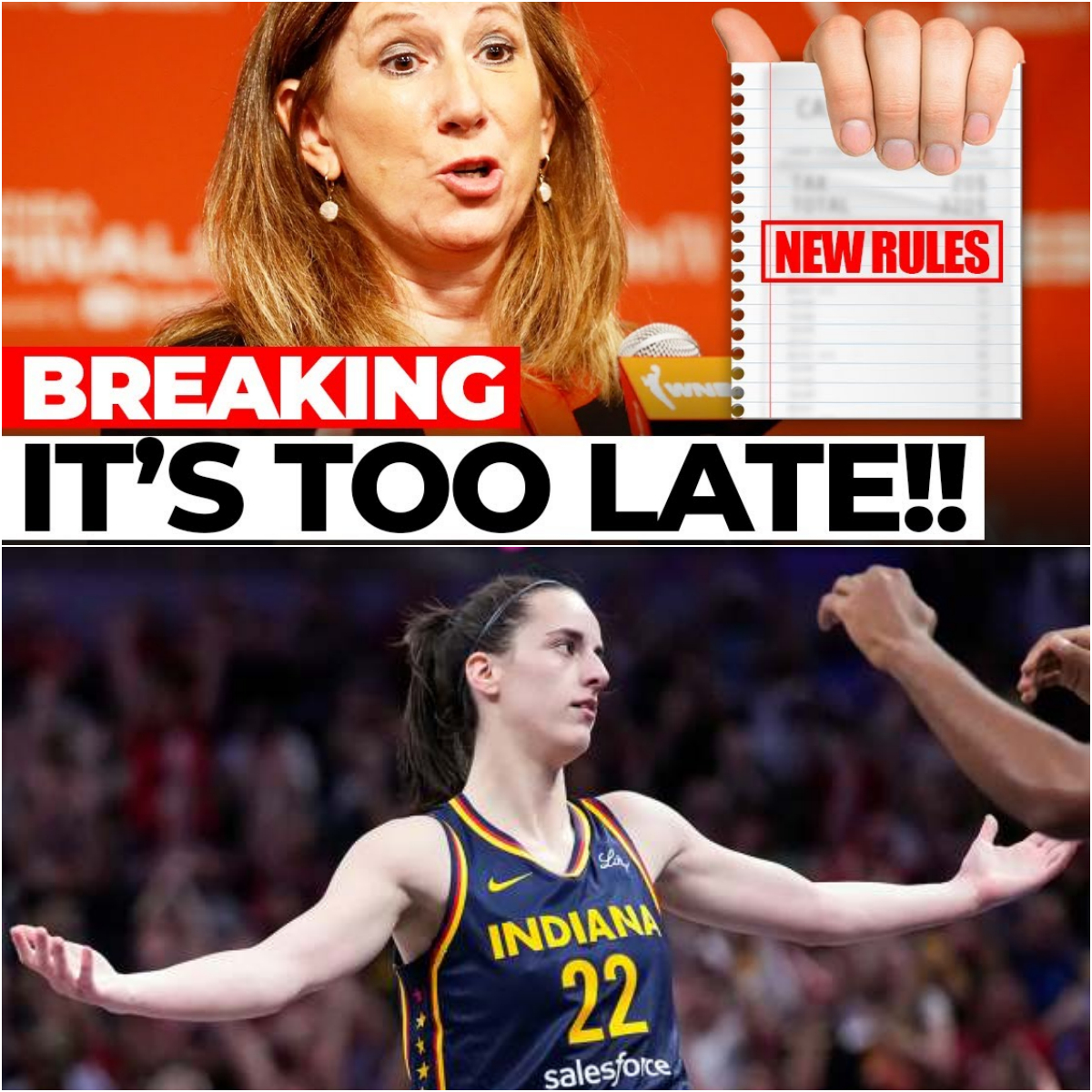In a shocking move, the WNBA has announced significant rule changes in the wake of Caitlin Clark’s decision to leave for Europe, sending ripples through the league and its fanbase. The sudden departure of the breakout star, who singlehandedly elevated the league’s profile, has left the WNBA scrambling to recover from plummeting viewership and dwindling attendance. Now, with a series of new rules set to take effect in 2025, fans are left wondering: is it too little too late?

Commissioner Kathy Engelbert dropped the bombshell during the WNBA playoffs, unveiling a revamped Finals format and an extended regular season. Starting in 2025, the WNBA Finals will shift to a best-of-seven series, and the regular season will expand from 40 to 44 games, with the introduction of the Golden State Valkyries as a new franchise. But fans aren’t convinced this is enough to fill the void left by Clark’s exit.
The numbers paint a grim picture. Since Clark’s departure, ratings have nosedived by 80%, and arenas once packed to the rafters now look like ghost towns, with empty sections draped off to mask the lack of attendance. “Clark was carrying this league on her back,” one analyst noted. “Now she’s gone, and the league is in a freefall.”
Fans have voiced their frustration online, criticizing the WNBA for addressing surface-level issues without fixing the core problems that have plagued the league. Player safety, fair officiating, and recognition of star talent continue to be the hot-button issues that fans feel are being ignored.

Clark’s meteoric rise, including her record-breaking performances and highlight-reel plays, drew millions of viewers to the WNBA. Her playoff games averaged between 2 to 3 million viewers, while games without her struggle to crack 500,000. She wasn’t just a player — she was a cultural moment that made women’s basketball must-see TV.
But with Clark gone, the WNBA’s desperation is showing. Expanding the season and elongating the Finals might seem like an effort to generate more excitement and revenue, but critics argue it’s just a band-aid on a deeper wound. Fans have made it clear: they want the kind of fast-paced, joyful basketball that Clark brought to the court, along with better officiating and more attention to player safety.
The WNBA is banking on these changes to reignite interest and keep the league afloat. But as arenas grow emptier and TV ratings plummet, the question remains: can the WNBA survive without its golden star, or are these new rules a last-ditch effort to keep a sinking ship from going under? Only time will tell if the league can recover from the Caitlin Clark effect — or if women’s professional basketball in the U.S. is in for a long, hard road ahead.
